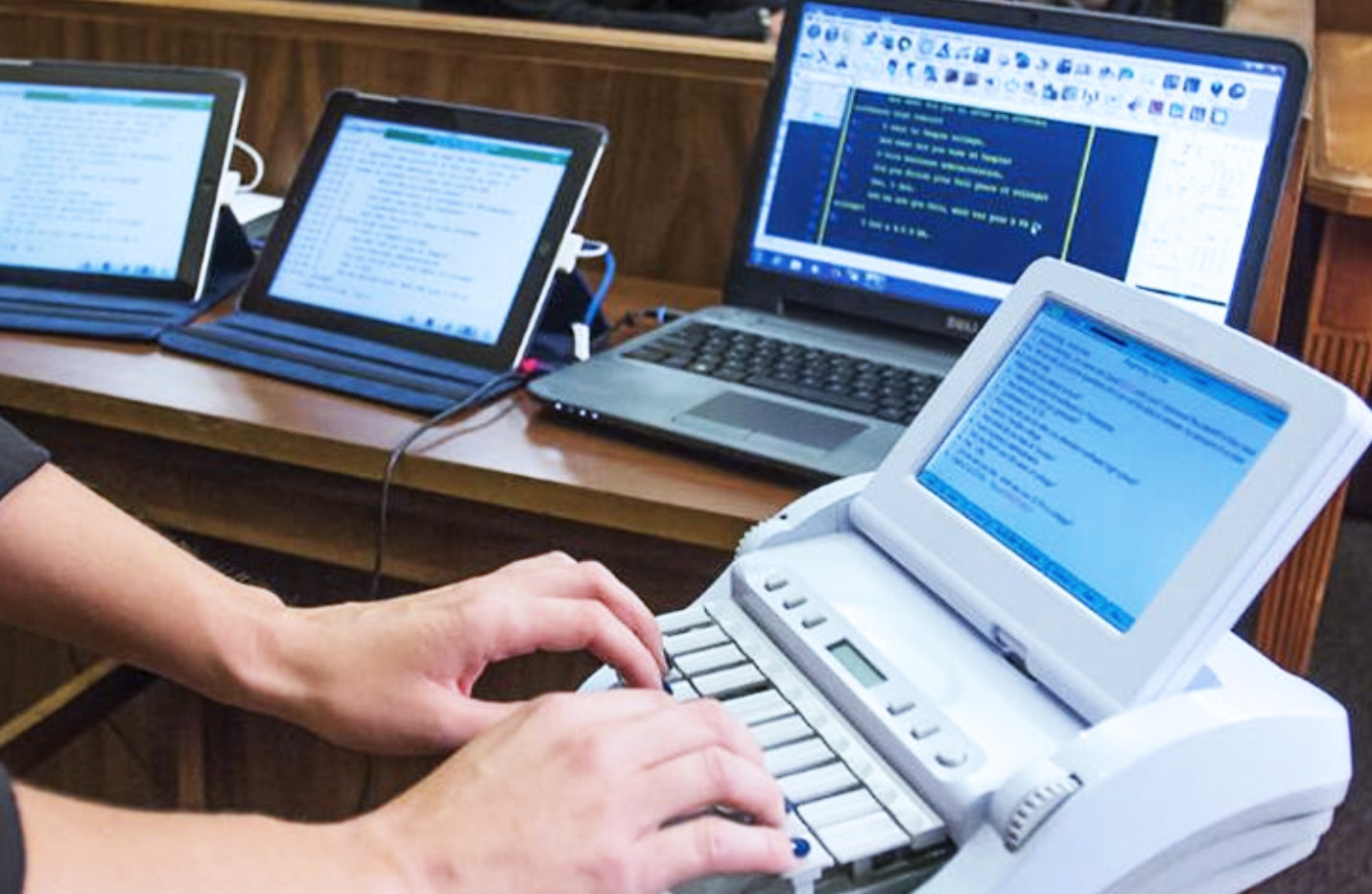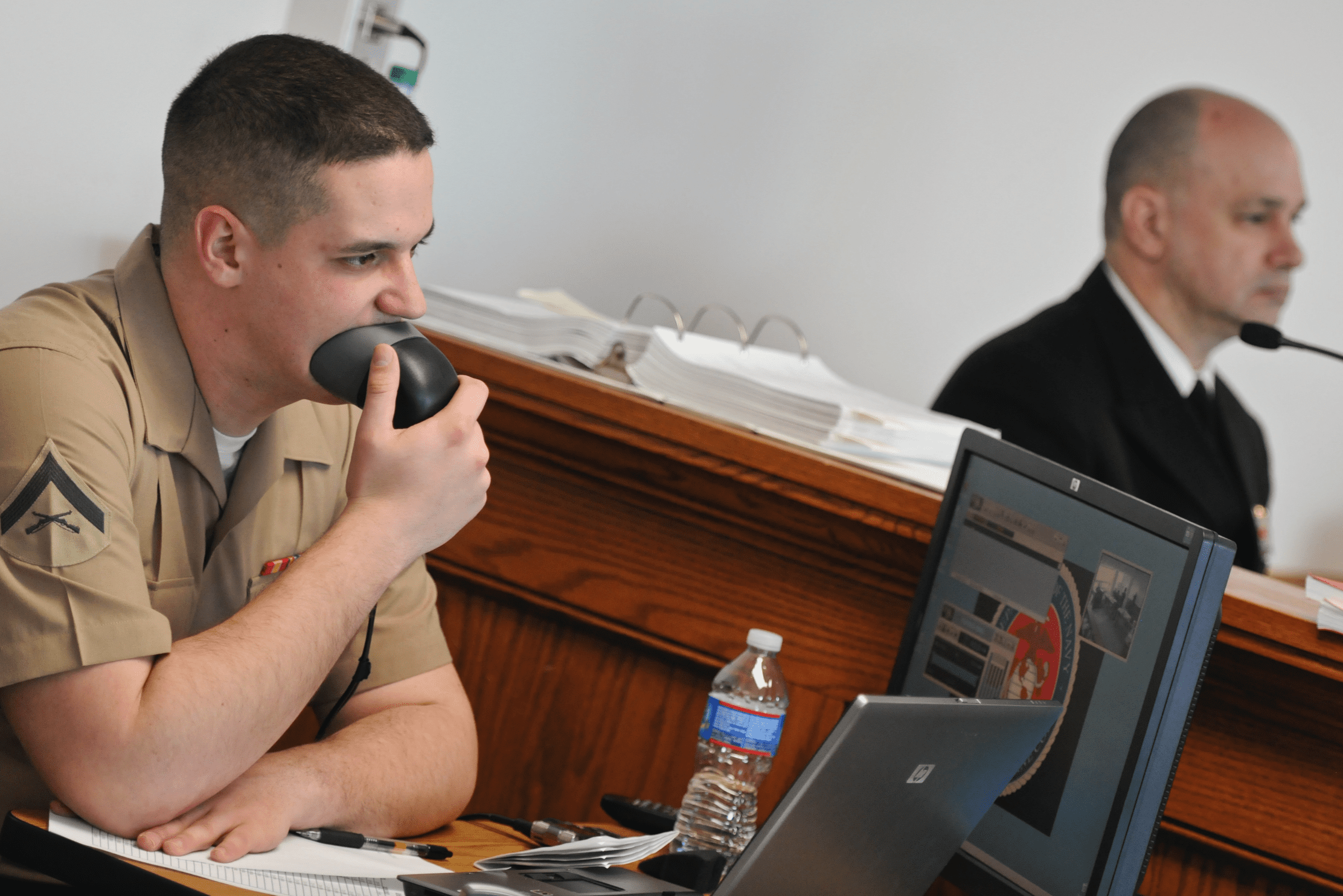The Biggest Obstacles in court reporting Today (And How They're Overcome)
The Biggest Obstacles in court reporting Today (And How They're Overcome)
Blog Article
How Court Reporting Guarantees Accurate Transcriptions in the Justice System
You know that court coverage is necessary for preserving the honesty of the justice system. Every word spoken in a courtroom is recorded with accuracy, making sure transparency in legal procedures. However have you ever considered how innovative technology and the dedication of proficient reporters contribute to this accuracy? The implications of their job expand far past plain transcription. Let's explore the crucial duty they play fit fair results in our lawful system.
The Function of Court Reporters in Legal Process
When you enter a courtroom, you could not realize just exactly how vital stenotype reporter are to the lawful procedure. These experts rest quietly, recording every word talked throughout proceedings, from witness testaments to lawyers' debates. They use customized tools to develop precise, verbatim transcripts that serve as necessary documents of the instance.
Court press reporters ensure that all celebrations have access to an accurate account of what transpired, which is crucial for appeals and future recommendations. You may not believe about it, however their work supports the transparency of the judicial system, enabling judges and juries to make enlightened decisions based on clear evidence.
Advanced Modern Technology in Court Reporting
In today's hectic lawful environment, remaining upgraded on innovative modern technology in court coverage is essential. You'll locate that stenography equipments have actually advanced substantially, and voice acknowledgment software program is transforming the game. And also, electronic recording techniques are making it simpler than ever before to record exact records.
Stenography Machines Advancement
As modern technology advances, stenography machines have actually advanced considerably, boosting the means stenotype reporter catch talked words. You'll see contemporary equipments are currently more portable and user-friendly, permitting higher transportability and convenience of usage. These gadgets utilize numerous keys that allow you to type entire expressions simultaneously, substantially enhancing transcription speed and accuracy. With built-in memory, they can keep comprehensive vocabulary, adapting to various lawful contexts. In addition, innovations in software application have actually boosted the assimilation of these makers with electronic devices, better streamlining the transcription procedure. Therefore, you can rely upon these advanced devices to supply exact and timely records, guaranteeing justice is served successfully in every court room setting.
Voice Acknowledgment Software
Stenography makers have set a strong foundation for catching talked words, however voice acknowledgment software application is taking court reporting to the following level. This advanced technology enables for real-time transcription, making it less complicated for you to accessibility details promptly throughout court process. While it's not a total replacement for traditional approaches, it's a vital asset that complements the abilities of court press reporters, guaranteeing justice is offered accurately and promptly.
Digital Recording Techniques
While voice acknowledgment software boosts court coverage, electronic recording techniques offer another layer of accuracy and reliability. Additionally, digital recordings can be conveniently stored, indexed, and got, making them an important source for legal specialists. As technology advances, integrating these methods along with conventional methods aids keep the integrity of the justice system, ensuring that all voices are listened to and properly transcribed.
The Importance of Accuracy in Transcriptions
Precision in transcriptions isn't just a choice; it's a necessity that can profoundly impact lawful procedures and organization communications. When you count on accurate transcriptions, you guarantee that every word talked is captured properly. This precision impacts legal results, as also a single blunder can alter the interpretation of testament or proof. Think of the effects if a vital detail is misrepresented; it can lead to wrongful convictions or unfair settlements.
In service, exact transcriptions foster clear interaction, enabling groups to work together properly and make informed choices. Misunderstandings from incorrect records can cause economic losses or damaged partnerships. By focusing on precision, you not just support the stability of the justice system but also enhance specialist communications. In both domains, the truth rests on the information captured in transcriptions, making precision an important element of effective interaction and justice.
Keeping Privacy and Integrity
In a world where delicate details is usually traded, maintaining confidentiality and honesty in court coverage and transcriptions is essential. You require to recognize that stenotype reporter are privy to extremely confidential information, from personal testimonies to delicate lawful methods. This obligation needs a strict adherence to moral guidelines and legal standards, guaranteeing that all information continues to be safe and secure.
When you function with a stenotype reporter, you can rely on that they'll handle your information discreetly. They employ various approaches to protect records, description including safe and secure storage space and restricted gain access to (court reporting). In addition, they're educated to recognize and browse concerns related to privacy, making certain that sensitive material isn't revealed inappropriately
Honesty is equally essential; precise coverage promotes rely on the justice system. By valuing both confidentiality and integrity, stenotype reporter play an important function in promoting the fairness and integrity of legal process. This commitment inevitably strengthens the structure of justice itself.
The Impact of Court Coverage on Fair Trials
Court reporting significantly affects the fairness of trials, as it guarantees every talked word is caught and documented. When you step into a court room, you expect an accurate document of all proceedings, which's where court reporters come in. They ensure that the dialogue, evidence, and testimonies are carefully transcribed, offering a reliable reference for judges, juries, and lawyers. This level of detail not only aids in the decision-making process however additionally secures the civil liberties of all parties entailed.
With precise court coverage, you assist copyright the principle of justice, making certain that everybody gets a fair chance in court. Eventually, this openness strengthens public depend on in the lawful system and its results.
Obstacles Faced by Court Reporters
The stability of test records depends heavily on the abilities of stenotype reporter, yet they face many difficulties that can affect their work. One significant obstacle is the fast-paced nature of legal procedures. You typically have to record every word talked in real-time, which can be frustrating, especially during heated exchanges. History sound and overlapping dialogue can even more make complex points, inconveniencing to provide precise records.
Furthermore, differing accents and talking styles can present troubles in understanding and recording precisely. You may likewise come across psychological testaments that need a high degree of concentration and empathy, which can be draining.
Furthermore, tight deadlines commonly suggest you're working under pressure, leaving little space for mistake. These challenges highlight the significance of your function and the requirement for continuous training and support to maintain the quality and precision of court coverage in the justice system.
The Future of Court Reporting in the Justice System
As innovation develops, you might wonder how it will certainly form the future of court coverage in the justice system. Automation and man-made intelligence are set to revolutionize the field, making transcription faster and much more efficient. You might see AI-assisted devices that can capture speech in real-time, click here for more reducing the workload for human stenotype reporter.
Nonetheless, the human touch stays important. You'll still rely on experienced specialists to ensure accuracy and try this context in transcriptions. Court press reporters will likely adapt by incorporating sophisticated technology right into their practices, using software that boosts their capacities instead of replaces them.
Additionally, remote process are coming to be extra usual, so you'll find court reporters welcoming video clip conferencing tools to give seamless solution. As you browse this developing landscape, the mix of technology and human proficiency will certainly improve the justice system's honesty, guaranteeing that exact transcriptions remain a foundation of reasonable legal procedures.
Regularly Asked Inquiries
What Certifications Are Needed to Come To Be a Court Reporter?
To become a court reporter, you'll need a secondary school diploma, specialized training in court coverage, and frequently a qualification or license - court reporting. Solid inputting abilities and focus to detail are vital for success in this field
Exactly How Does Court Reporting Differ From Various Other Transcription Solutions?
Court reporting focuses on legal process, recording every talked word with accuracy. Unlike various other transcription solutions, it needs specialized training, real-time abilities, and adherence to stringent privacy criteria to assure precision in lawful contexts.
Can Court Reporters Give Providers for Non-Legal Events?

What Is the Typical Wage of a Court Reporter?

The typical salary of a stenotype reporter differs, but it usually ranges from $50,000 to $80,000 each year. Variables like place, experience, and specialization can considerably influence your gaining capacity in this profession.

Exactly How Do Stenotype Reporter Deal With Numerous Speakers in a Trial?
When managing several speakers, you focus intently, utilizing specialized methods like audio speaker recognition and abbreviations. You readjust your writing style to record each voice precisely, making sure the transcript mirrors the trial's vibrant discussion.
Report this page